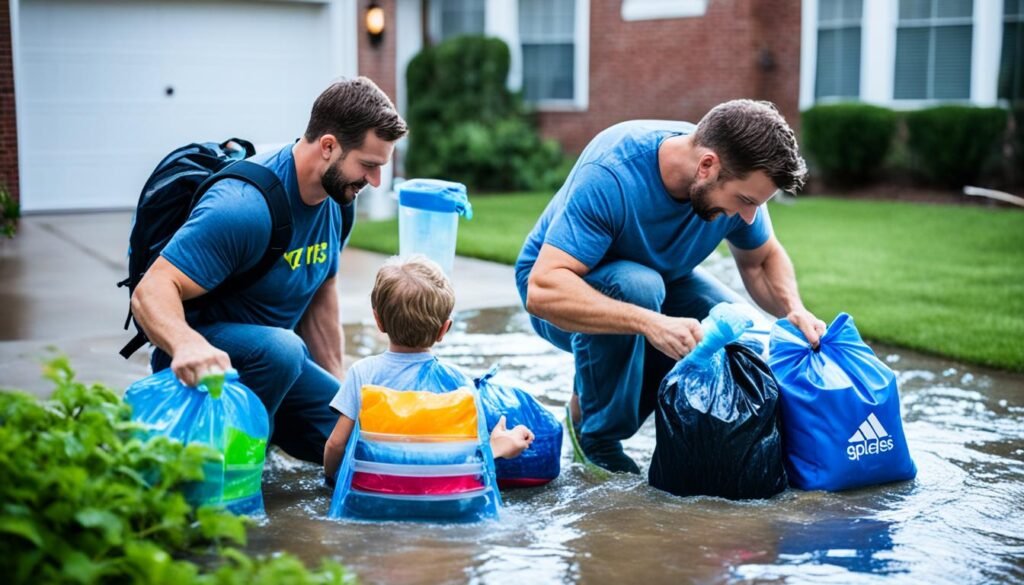Floods are the most common natural disaster in the United States. They cause billions of dollars in damages every year. Being prepared with the right strategies for an emergency response is crucial for homeowners when a flood threatens.
Every second matters during a flood. By following emergency response tips, you can protect your home quickly. You’ll also keep yourself and your loved ones safe. Creating an emergency plan and a home emergency kit, understanding flood risks, and knowing when to evacuate are key. These steps will help you handle a flood situation well.
Key Takeaways:
- Create an emergency plan and communicate it with your family members.
- Assemble a home emergency kit with essential supplies.
- Understand the types of flooding and flood risks in your area.
- Stay informed by monitoring local weather updates and alerts.
- Follow evacuation orders and know the safest routes to higher ground.
Understanding Flood Risks and Taking Precautions
Before a flood, you need to know the kinds of floods that might hit your area. These are flash floods, river floods, storm surges, and coastal floods. Knowing what to expect lets you get ready and make plans.
Flash floods are quick and violent, caused by heavy rain and full drainage systems. River floods happen when rivers overflow, leading to water flooding the land. Storm surges and coastal floods damage during severe weather, pushing seawater inland.
To find out your flood risk, check the FEMA Flood Map Service Center. Just type in your address. It shows flood zones and depth, helping you know what you’re up against.
Talk to your local emergency management office for flood readiness tips. They offer advice on evacuation routes and what to do when a flood comes. They’re experts in keeping you safe.
To stay safe in a flood, be ready and informed. Keep an eye on flood alerts and follow local advice. Understanding and preparing for flood risks can save your home and community.
Essential Steps for Emergency Preparedness and Response
When a flood hits, homeowners have essential steps to follow for preparedness and response. To be fully prepared for a flood, download the Flood Safety Checklist from the Red Cross. This guide helps you prep for the unexpected.
Remember to “Turn Around, Don’t Drown.” Never try to walk, swim, or drive through floodwaters. Just six inches of moving water can knock a person off their feet. Two feet of water can carry away cars. Always put your safety first.
To avoid injuries in floods, steer clear of fallen power lines and tumbling debris. Use protective gear like gloves, boots, and masks for cleanup. This protects you from sharp objects, harmful chemicals, and dirty water.
It’s very important to protect your health in a flood. Stay away from dirty water, throw out bad food, and air out damp places to stop mold. Dry and clean your home fast to prevent damage.
Preventing carbon monoxide poisoning after a flood is key. Don’t use gas, propane, or charcoal devices inside—they release dangerous gases. Use devices that are battery-powered or plug-in instead, and make sure the area is well-ventilated.


